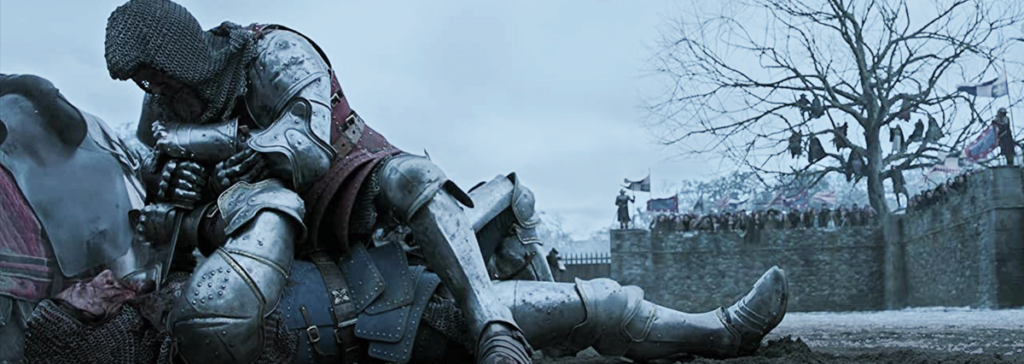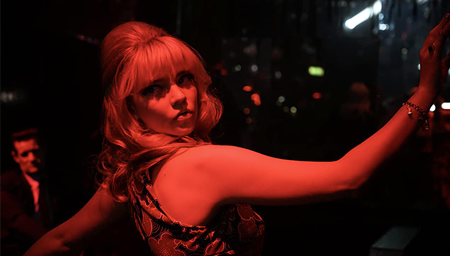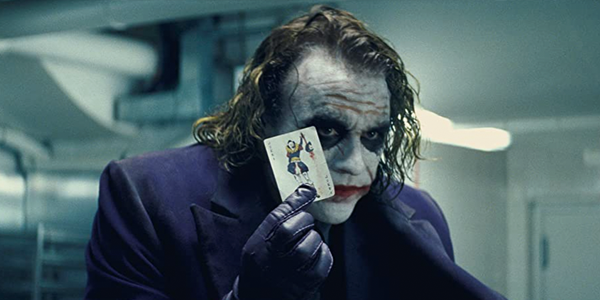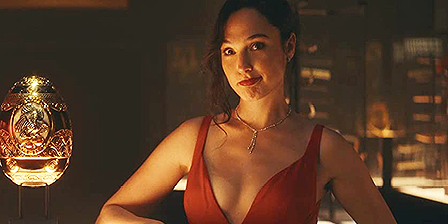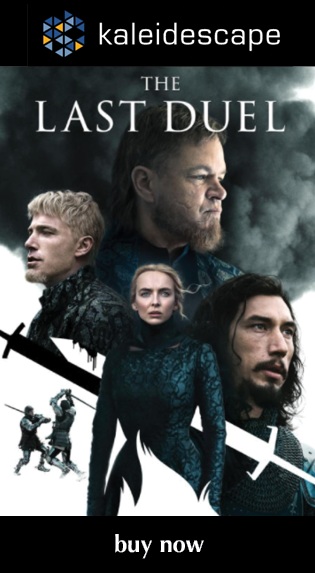recent reviews
Sign up for our monthly newsletter
to stay up to date on Cineluxe
Ridley Scott does Rashomon, applying contemporary sensibilities to medieval morality in this tale of rape & warfare
by John Sciacca
December 5, 2021
Under typical circumstances, The Last Duel would likely have been a successful film as it carries about as solid a pedigree as you can get in Hollywood these days. You have Ridley Scott in the director’s chair, whose resume carries such films as Alien, Blade Runner, Gladiator, Blackhawk Down, The Martian, and many, many more. You have the writing team of Matt Damon and Ben Affleck, reuniting on their first collaboration since their Oscar-winning turn at Good Will Hunting in 1997, along with Nicole Holofcener to help with female perspective. You have a leading cast that is stacked with Damon, Affleck, Adam Driver, and Jodie Comer. And you have an epic story based on actual events covered in the book The Last Duel: A True Story of Trial by Combat in Medieval France by Eric Jager, which has massive scope and scale clearly meant to be viewed up on a big screen. And even critics largely enjoyed it, with the movie currently sitting with a Rotten Tomatoes rating of 86%.
Except, it wasn’t. With its $100 million budget, the film has so far managed to bring in just under $11 million in North America, and a paltry $29.8 million worldwide.
The problem, according to Scott, wasn’t the lack of promotion by Disney—which inherited the film when it bought Fox—who Scott says “loved the movie” and “did a fantastic job with promotion,” or even people not ready to return to cinemas post-pandemic, or even how the better-than-movie-theater experience at home is changing movie-going habits. Rather Scott blamed the lackluster performance on Millennials.
“I think what it boils down to—what we’ve got today [are] audiences who were brought up on these f—ing cellphones,” Scott claimed. “The millennian do not ever want to be taught anything unless you are told it on the cellphone. This is a broad stroke, but I think we’re dealing with it right now with Facebook. There is a misdirection that has happened where it’s given the wrong kind of confidence to this latest generation.”
At its heart, The Last Duel is a he said/she said story that certainly feels familiar in the post-#MeToo-movement world. But things were much worse for women back in the 14th Century, where it was definitely a man’s world and a woman’s primary role was to produce a male heir. The movie also informs us that a rape wasn’t a crime against a woman, but rather a property crime against her husband. Also, not only was a woman not even permitted to bring charges without her husband’s permission; if she was found to be guilty of bringing a false witness against a man, she was to be burned alive.
Similar to Akira Kurosawa’s 1950 film Rashomon, The Last Duel is presented in three “chapters,” with “the truth” as told through the principal characters’ point of view, with several of the same scenes shown over and over, but through the lens of how that character saw events. Also similar to Rashomon, the key bit of “truth” at stake here is whether or not a woman was raped.
Apparently, this was supposed to star Damon and Affleck—similar to their turns in Hunting—but due to other commitments, Affleck stepped aside from the leading role and instead took a smaller part as the wealthy cousin to King Charles VI, Count Pierre d’Alencon, and he looks so different with blonde hair and eyebrows that it was a few scenes before I recognized him. This actually was a good change, as Driver as Jacque Le Gris has more intensity, presence, and sheer physicality to be a more convincing opposite to Damon’s Sir Jean de Carrouges.
As I mentioned in the opening of my King Richard review, cinematic “truth” often differs from the actual truth, and it appears The Last Duel is more a film based on actual events than the reality of what happened. You can learn more about the film’s historical accuracy in this article written by a medieval history professor.
The film opens with a brief taste of the climactic final duel to come, showing the Carrouges and Le Gris facing off in a joust before a crowded arena, and then cutting to black as they make first contact.
The film’s first chapter—“The truth according to JEAN DE CARROUGES”—is the longest and most fleshed out of the three, telling events from Carrouges’ perspective. While he fights alongside his friend Le Gris, jealousy develops over gifts and favor d’Alencon bestows on Le Gris. To improve his finances, Carrouges marries Lady Marguerite de Thibouville (Comer), the daughter of a disgraced gentleman, for her large dowry and rights to her estate; but part of the estate he is promised has actually been taken by d’Alencon and given to Le Gris. Adding further insult to Carrouges, d’Alencon appoints Le Gris to be captain of a fort that had been held by the Carrouges family for generations. When Carrouges returns from a trip collecting monies owed him from a conquest, Marguerite informs him that Le Gris came to the home while she was alone and forced himself on her. Knowing that d’Alencon will dismiss any case he brings, Carrouges appeals to King Charles VI (Alex Lawther), asking to defend his and his wife’s honor in a duel to the death, where God reveals the innocent party—i.e., the winner—proving their cause was truthful and just.
The second chapter—“The truth according to JACQUES LE GRIS”—reveals another side of the triangle and develops events that happened beyond Carrouges’ perspective. Le Gris doesn’t deny the carnal relations—at first—but rather feels Marguerite was willing and consenting. “She made the customary protests,” he claims, but it definitely wasn’t rape.
The final chapter is “The truth according to THE LADY MARGUERITE,” and the words “The Truth” linger on the screen for several seconds, implying this is how events really happened. Here we see how Marguerite is really dealt a poor hand, stuck in a difficult marriage to a difficult man, with the strain of not getting pregnant after years of marriage weighing heavily on them both. Her word over the rape is repeatedly questioned, and adding fuel to the doubters is the fact that she is now pregnant following the event. The dubious “science” of the day claimed a woman was unable to get pregnant unless she experienced “pleasure at the end,” and that “rape cannot result in pregnancy; this is just science.” So, if a woman was to become pregnant, she was really enjoying the act, so was it really a rape at all?
Running just over two and a half hours, the film never feels rushed, but with a fair bit of action interspersed, the terrific cinematography, and a steady stream of “new” information, I never found it slow or dragging. It steadily builds in tension toward the final duel, and left me truly unsure of how it was going to finish.
After some of the massive battles portrayed in Game of Thrones, impressing with epic medieval warfare isn’t easy, but Scott has proven he knows how to film battles both big and small, and the action here is up close, dirty, brutal, and violent. You feel like you are right in the midst of things, especially in the final duel where the hand-to-hand fighting is literally face-to-face at times.
Shot on Arri at 4.5K, this transfer is taken from a true 4K digital intermediate presented in 2.39:1 aspect ratio. This film has epic scale and certainly deserves to be viewed on a big, cinematic screen where you can appreciate the huge country, locations, and sets. It looked terrific on my 115-inch screen. While not a criticism, images looked more film-like instead of having the tack-sharp ultra-resolution of many modern films, but that fit the movie’s feel.
There are plenty of scenes that show off the clarity and resolution. Closeups of Marguerite let you see her smooth skin and tiny pores, and equally view the ragged scar on Carrouges’ cheek. You can also appreciate the craftsmanship and texture in the costuming, from fine linens, heavy leathers and furs, satins and silks, and dense armor. In an opening scene, you can clearly see each individual link in chain mail armor or see the fine gold braiding in a detail around a hat or the fine stone and mortar lines in buildings and walls.
Much of the movie is filmed in cold, wintry greys with overcast skies, with drab browns and other earth tones, so there aren’t a lot of big, saturated colors. The HDR grade does give us really natural-looking images, with loads of shadow detail. It also benefits the numerous scenes that were filmed either by roaring fire or candlelight, providing plenty of light to make the flames pop while still keeping blacks dark and detailed. The warm, golden glowing shots by candlelight come across especially well in HDR—and can also be tricky for lower-bitrate streamers, as they can cause posterization, but they looked beautiful and realistic here.
The Dolby TrueHD Atmos soundtrack is engaging, energetic, and immersive when it needs to be. From the opening, you’ll hear the background sounds of wind whistling around the room, crows cawing, bells ringing in the distance, and flags snapping overhead that place you right into the scene. Inside castles, you’ll hear the noise of raucous feasting, or the reverberance of voices echoing off hard castle walls, and the overhead sounds of rolling thunder.
Of course, the big audio moments are the battle scenes, and here all speakers are employed to immerse you in the mayhem. There are the thundering stomps of horse hooves in your sub channel, the huge clash and clang of steel on armor, and the sounds of flaming arrows sizzling overhead and whizzing past you into the back of the room. The final battle is long and especially brutal, and the sounds certainly heighten the tension and emotion. Dialogue has been increasingly difficult to understand in some films, but I’m happy to say I never had any issues here, and voices were always clear and intelligible in the center channel.
The Last Duel is available on digital platforms like Kaleidescape now, and will be released on UltraHD Blu-ray on December 14. While it is an intense film, and the rape scene—shown twice—is ugly and hard to watch, the movie is fueled by strong performances and beautiful cinematography, and it delivers an experience on a large, premium home entertainment system that will likely spark some conversations after the credits roll.
Probably the most experienced writer on custom installation in the industry, John Sciacca is co-owner of Custom Theater & Audio in Murrells Inlet, South Carolina, & is known for his writing for such publications as Residential Systems and Sound & Vision. Follow him on Twitter at @SciaccaTweets and at johnsciacca.com.
© 2023 Cineluxe LLC

